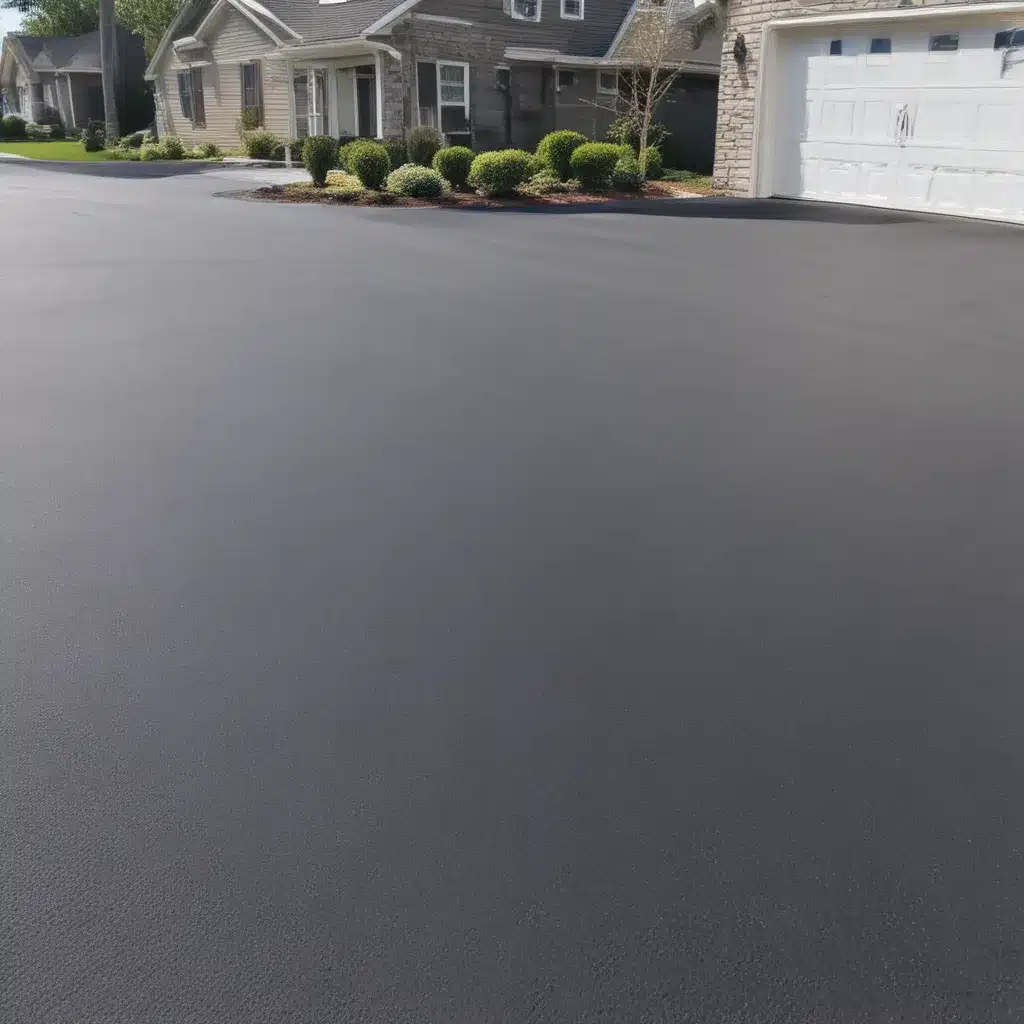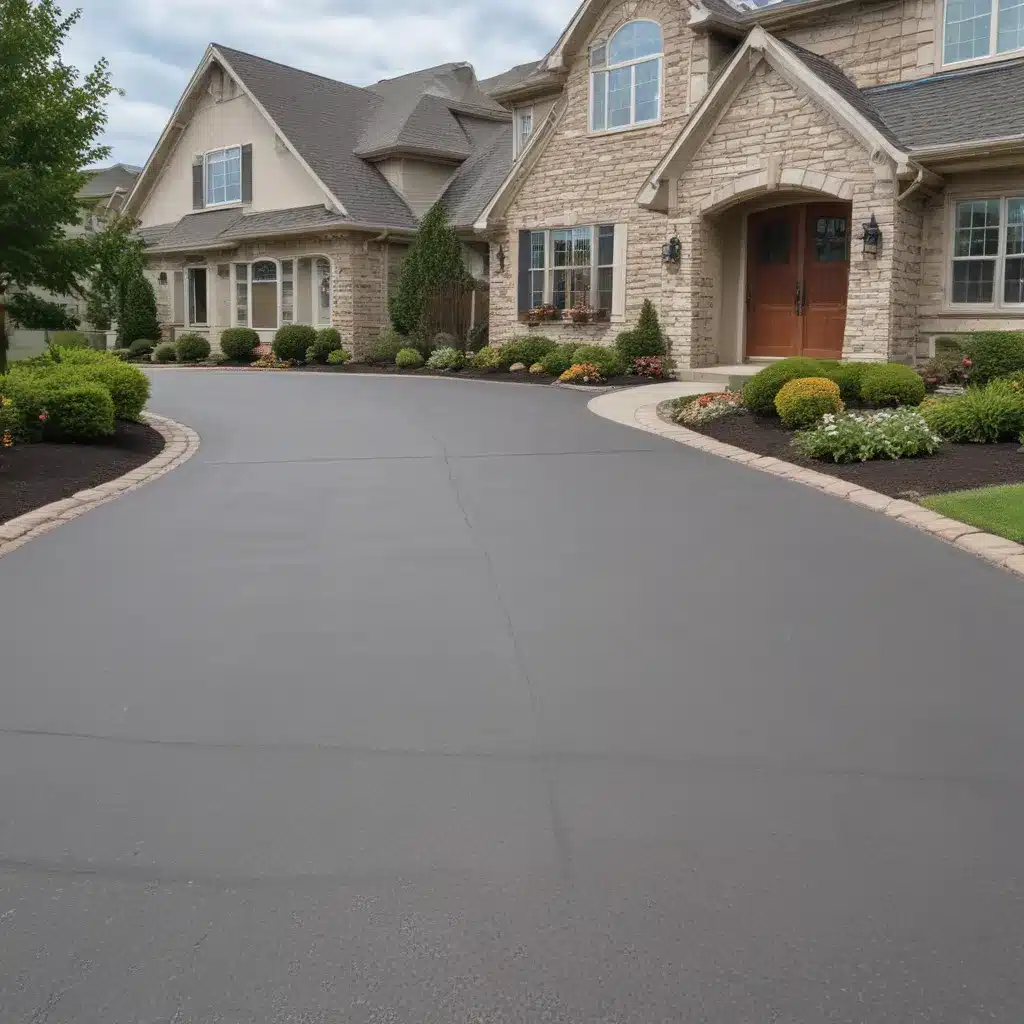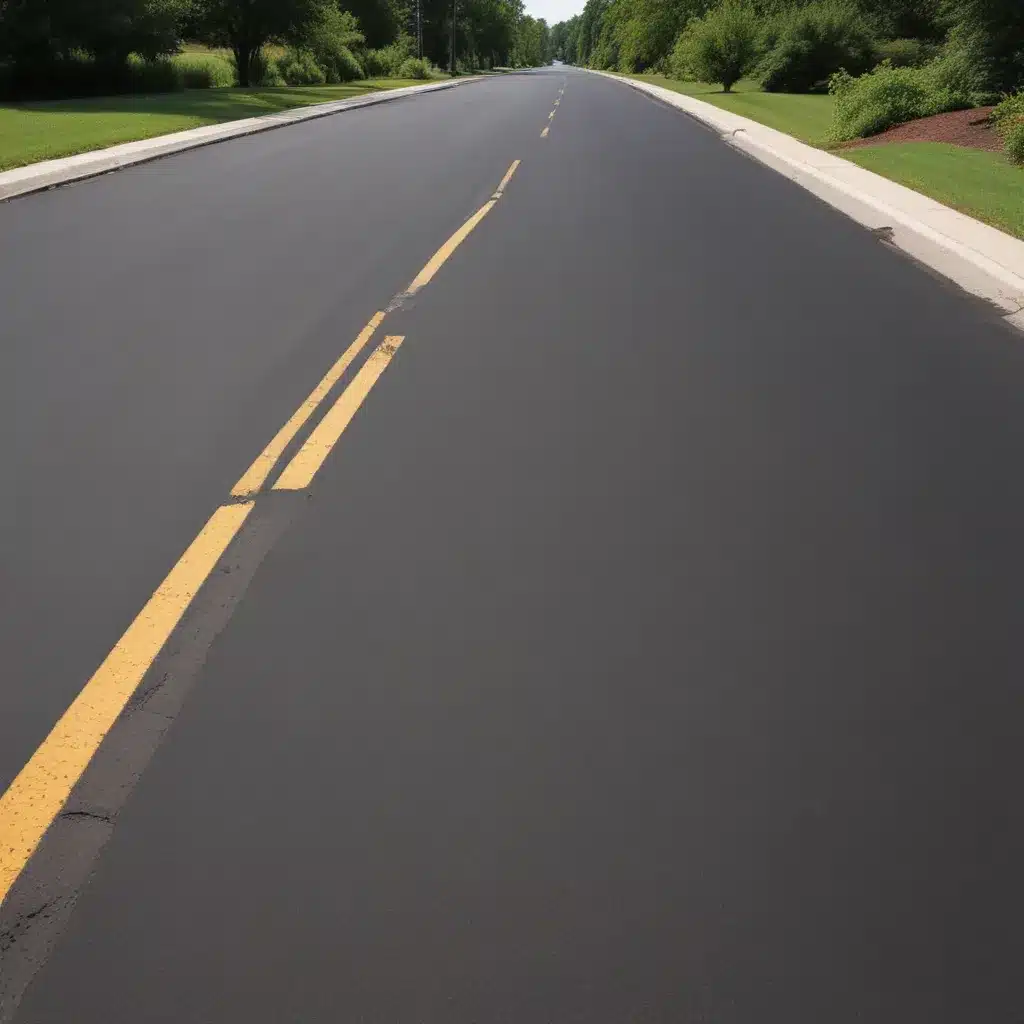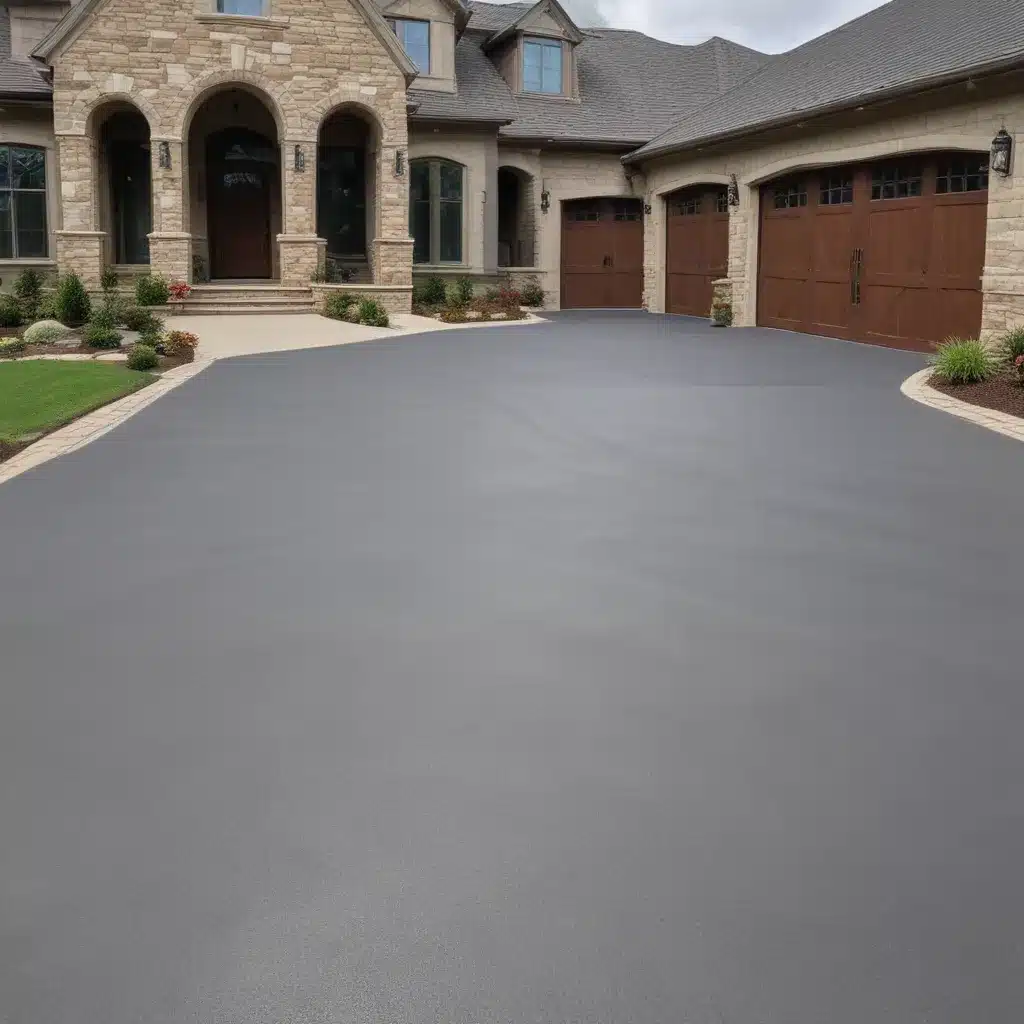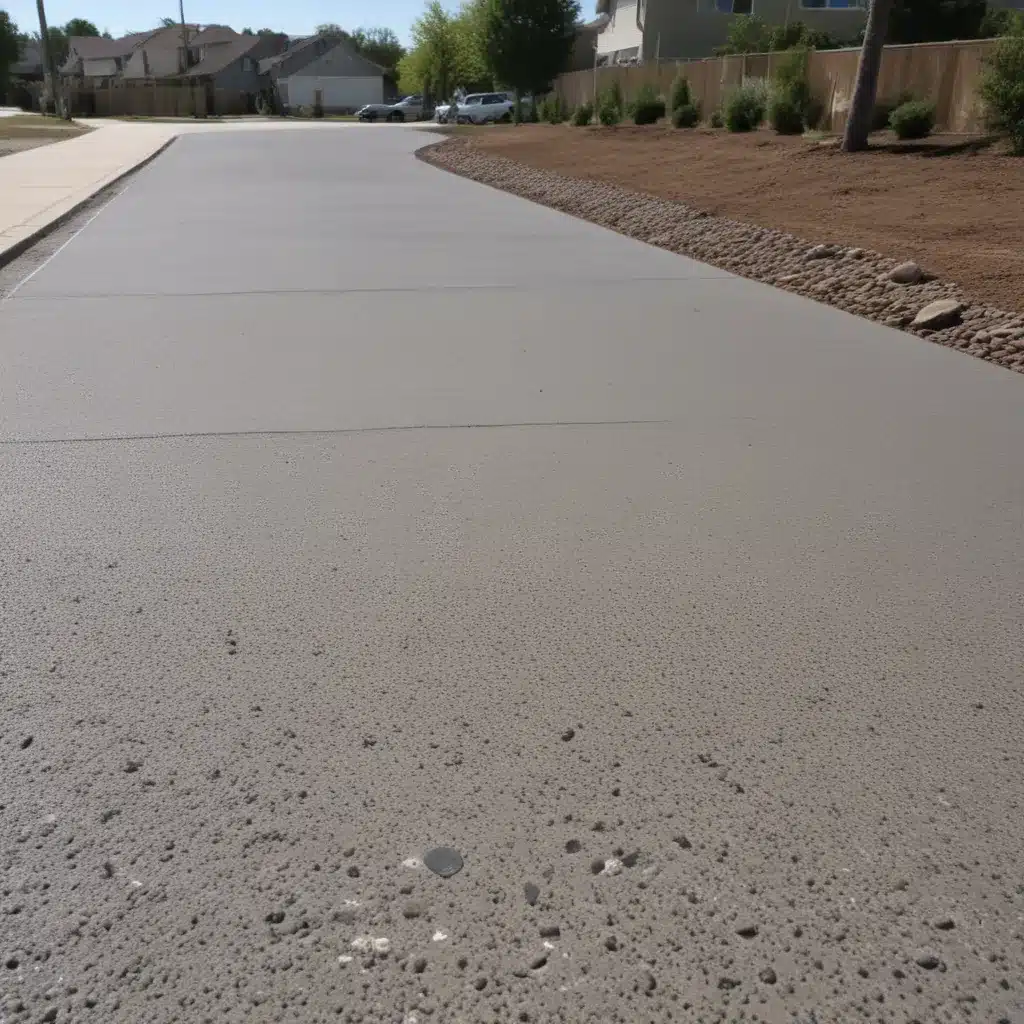Potholes, Cracks, and the Great Driveway Dilemma
Have you ever stood in front of your driveway, hands on your hips, staring down at the cracks and potholes, wondering if it’s time for a serious overhaul? It’s a conundrum that many homeowners face – do you sealcoat and patch, or bite the bullet and completely resurface? As someone who has been in the driveway game for over a decade, I’ve seen it all. Today, I want to share my expertise and guide you through this tricky decision.
Sealcoating: Keeping Cracks at Bay
Sealcoating is often the go-to solution for those minor imperfections that start to creep up on your driveway. The process involves applying a protective layer over the existing asphalt or concrete, effectively sealing in any small cracks or holes. Think of it like a makeover for your driveway – it can restore the color, smooth out the surface, and add a few extra years of life.
But here’s the thing – sealcoating is not a permanent fix. It’s kind of like slapping a bandage on a deep cut. Sure, it’ll cover up the problem for a while, but eventually, those cracks and potholes are going to come back. And the more you have to reseal, the more it’s going to cost you in the long run.
I’ve had clients who have religiously sealcoated their driveways every 2-3 years, only to find themselves right back where they started a few years down the line. It’s a never-ending cycle of patching and repatching, and let me tell you, it can get old real fast.
Resurfacing: The Clean Slate Approach
On the other hand, there’s the option of completely resurfacing your driveway. This is the big, bold move – tearing up the old and laying down a fresh, new surface. It’s a more extensive (and expensive) project, but the payoff can be huge.
Resurfacing gives you a clean slate to work with. You’re not just covering up the problems, you’re starting from scratch. And when it’s done right, a resurfaced driveway can last you for 15-20 years or more. That’s decades of worry-free driveway bliss, my friends.
Now, I know what you’re thinking – “But won’t that cost an arm and a leg?” And you’re not wrong. Resurfacing is definitely the more costly option upfront. But if you factor in the long-term savings of not having to sealcoat every few years, it can actually end up being the more cost-effective choice in the grand scheme of things.
Weighing the Pros and Cons
Okay, let’s break it down. When should you sealcoat, and when should you resurface? Here are some key factors to consider:
| Sealcoating | Resurfacing |
|---|---|
| Pros: – Relatively inexpensive – Can improve the appearance of your driveway – Protects against minor cracks and damage |
Pros: – Lasts 15-20+ years with proper maintenance – Fixes major cracks, potholes, and other structural issues – Provides a fresh, clean look |
| Cons: – Temporary fix, will need to be reapplied every 2-3 years – Doesn’t address underlying issues – Can’t fix major cracks or potholes |
Cons: – More expensive upfront cost – Requires more extensive labor and disruption to your property |
The way I see it, sealcoating is a great option if your driveway is in relatively good shape, with just a few minor blemishes. It can give your driveway a nice, refreshed appearance without breaking the bank. But if you’re dealing with extensive damage, structural issues, or a driveway that’s reaching the end of its lifespan, then resurfacing is probably the better long-term investment.
When to Call in the Pros
Now, I know what you’re thinking – “Okay, I get the pros and cons, but how do I know which route to go?” Well, that’s where the experts come in. As the owner of NW Driveways, I always recommend having a professional driveway specialist take a look and provide their assessment.
They’ll be able to do a thorough inspection, identify any underlying issues, and give you a clear recommendation on whether sealcoating or resurfacing is the better solution for your specific situation. And let me tell you, it’s worth the investment.
I’ve had countless clients come to me, frustrated and unsure of what to do, only to have our team provide them with the clarity and guidance they needed. And the peace of mind that comes with knowing you’re making the right decision? Priceless.
The Surprise Twist: When Both Options Make Sense
Here’s the thing – sometimes, sealcoating and resurfacing can actually work hand-in-hand. Hear me out on this one.
Let’s say you’ve got a driveway that’s starting to show its age, with a few cracks and small potholes here and there. Rather than jumping straight to the big resurfacing project, you could consider a two-step approach.
First, do a thorough sealcoating to address those minor issues and restore the surface. Then, a few years down the line, when the sealcoat starts to wear thin, go ahead and resurface. This way, you get the best of both worlds – the cost-effective, temporary fix of sealcoating, followed by the long-lasting, structural overhaul of resurfacing.
It’s kind of like a driveway makeover montage, just with a little more planning and foresight. And trust me, your wallet (and your future self) will thank you.
The Final Verdict: Listen to Your Driveway
At the end of the day, the decision to sealcoat or resurface your driveway is a highly personal one. It depends on the condition of your driveway, your budget, and your long-term goals for your home.
But here’s the thing – your driveway is trying to tell you something. Pay attention to those cracks, potholes, and surface imperfections. They’re not just aesthetic issues; they’re signs of underlying structural problems that need to be addressed.
So, the next time you’re standing in front of your driveway, hands on your hips, take a moment to really listen. What is it telling you? Is it begging for a fresh coat of sealant, or is it time to call in the big guns and go for a complete resurfacing?
The choice is yours, my friend. But remember, with the right expertise and guidance, you can make a decision that will have your driveway looking its best and serving you well for years to come. And who knows, you might even have a little fun along the way – after all, a driveway makeover is the perfect excuse to break out the lawn chairs and crack open a cold one, don’t you think?

